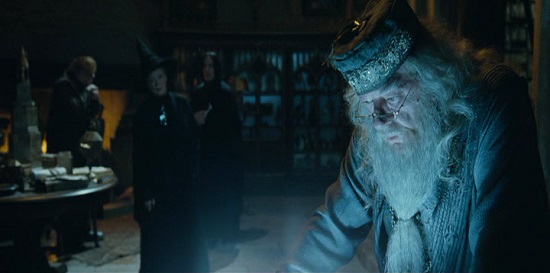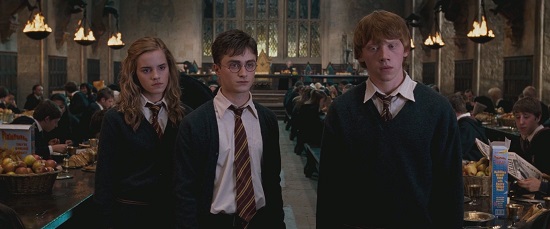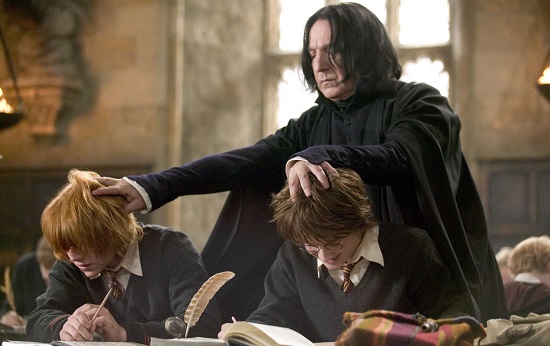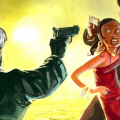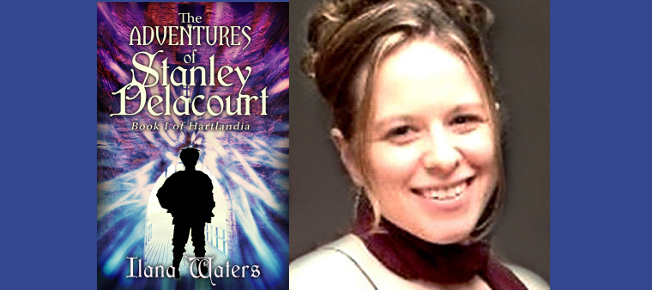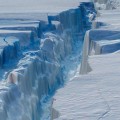In light of recent events regarding the release of the “Torture Report” by America’s Central Intelligence Agency, I find myself in the difficult position of having to keep an objective viewpoint on the narratives given by everyone within the political sphere. It goes without saying that the contents of this latest report provide a shocking glimpse at the lack of transparency and corruption within our own system. To put it in the simplest of terms, the trust of the people is at a rather low point. Fortunately, I am not alone in working to answer the tough questions, such as “What if Harry Potter were in the CIA?” To give you an idea, we examine the work of spy novelist Lynn Boughey, and Peter Earnest, thirty-six-year CIA veteran and executive director of the International Spy Museum, in their companion guide, Harry Potter and the Art of Spying.
Flashback! You are entering a new grade in elementary school. It is the year 1998, and the backwards baseball hat is in style. The cool kids are talking about “Harry Potter” – a sweater clad orphan that rides a broomstick. Teachers everywhere are overjoyed to see their students take an interest in reading books instead of watching MTV and skateboarding. Suddenly, the Harry Potter wave spreads. Soon, everyone will be curious about the adventures beyond Platform 9¾. The Vatican will denounce J.K. Rowling’s work as witchcraft and every boy with brown hair and glasses will be told that they look like Harry Potter, which is actually quite a compliment in many ways.
It is not surprising that the Harry Potter series has captured and maintained such a loyal fanbase. After all, the books grew up with the readers. As Harry began to discover what he wanted in life, so did we. As Harry developed everlasting friendships, so did we. As Harry went through periods of both joy and sorrow, so did we. As Harry got rejected by the Ravenclaw as his date to the Yule Ball, so did we. (That’s right, Wendy. I still remember.) So of course the books’ popularity spawned movies, videogames, comics, hundreds of fan sites, forums, and spin-offs. But it doesn’t end there. The world of Hogwarts has been (and continues to be) analyzed from Azkaban to the Zombie Trails. Readers of the books and fans of the films are determined to search every stone in the walls of Hogwarts for more information about their favorite wizarding world, and that’s where Boughey and Earnest step in.
Due to their extensive backgrounds in the world of spycraft, it should come as no surprise that this is a subject they hold in high regard. Harry Potter and the Art of Spying examines our hero’s growth as a young recruit to a top secret covert operative from his tenure at Hogwarts. It is apparent that the writers are experts on the subject, and the extensive contributions of Courtney Klein and Nichole Ellis certainly help make the case that Harry is a damn good secret agent. The Art of Spying begins with a chapter-by-chapter analysis of Harry Potter and the Order Of The Phoenix, the fifth book in J.K. Rowling’s seven book saga. This essentially means that the reader is expected to know all the major plot points of the series beforehand. While it may seem odd to immediately jump right in to book five without first examining the previous four entries, the concept works rather well. It is explained that Harry’s true talents as a spy don’t really hold much weight until Dumbledore’s Army and the Ministry of Magic enter the fray. The first 38 chapters (yes, 38) are littered with footnotes and endnotes, as well as personal quips from the authors; in many ways it reads more like a fun lecture than an actual textbook.
This does not necessarily mean that everything from Sorcerer’s Stone to Goblet of Fire received the axe, however. Notes are scattered throughout the text that provide insight, direct quotes, and even sourced page numbers for reference. In the early chapters we are told that Harry’s skills at reading facial expressions are an absolute necessity in the world of spying, and his interactions with the looming shadow that is the Ministry of Magic paint a pretty clear picture of how interactions between agencies in the wizarding world accurately reflect our own. The real star of the show is Professor Snape, however. Fans of the series are well aware that our grumpy Master of Potions turned out to be one of the greatest Double Agents in the genre. Without getting into the hows and whys, I can say that Boughey and Earnest’s explanations are certainly worth considering the next time you reread… Or re-reread, or re-re-reread the series. Seriously, I can’t tell you why. That’s classified information. (Get it? Classified? That’s a CIA joke.)
The Art of Spying explores more than just the characters, too. What really makes this worth reading is the detail into the actual world of Harry Potter. The Aurors, the Dementors, the Ministry itself, etc. all have a role to play. Each agency has its own rich history, and it is certainly refreshing to see a companion book that delves deeper into the witching well. Another interesting aspect to consider is that the authors are well aware that J.K. Rowling probably didn’t intend for Harry and the gang to become spies. There is a sort of mentality that “If you search hard enough, you can find anything” prevalent from start to finish and the honesty is quite welcome. Included in the pages are expansive glossaries, annotations, and appendixes that are worth looking to for further information. The text itself is very easy to read and it is written in a clear, concise manner.
But let’s get to the nitty gritty, shall we? The Art of Spying Harry Potter would probably do pretty well in the CIA. The Boy Who Lived has been trying to blend with his surroundings since he first showed up in The Sorcerer’s Stone (Or Philosopher’s Stone, as it is known in the lovely United Kingdom.) He is a wizard in a Muggle world; he simply does not belong. Naturally there were instances where Harry had used magic before his enrollment in Hogwarts, such as his mishap with the Reptile House. Harry, unwittingly, learns he can communicate with snakes and helps a boa constrictor escape captivity.
Later on we see Harry blowing his cover again. This time, however, he is aware that using magic in the outside world is a big deal. It is hard to forget Aunt Marge’s Big Mistake from Prisoner of Azkaban. Here we see Uncle Vernon’s sister verbally abuse Harry, but she later learns that it may not have been a good idea to insult the boy’s dead parents. Long story short, Harry turns her into a giant balloon. While just about every single person would applaud such an act, the Ministry of Magic certainly did not find it funny. Using their shadowy influence across the realms, the Ministry reprimanded Harry and “dealt with” the matter at hand. Harry’s lesson? Don’t blow your cover.
Then there is the infamous trial scene from Order of the Phoenix. The judges are not exactly on board with Dumbledore sticking up for Harry, but the wizened old Headmaster instructs Harry that knowing your enemy and knowing who is ignorant are two very, very important keys to getting out of trouble. Harry must weigh the consequences of every word and every action. He must be subtle and observe the body movements of each inquisitor. By now, Harry has become rather adept at reading people. Perhaps he may not be a guard in Guantanamo Bay, but he is certainly an agent who can work in the shadows.
While The Art of Spying is not an approved or sponsored entity, it definitely belongs on the shelf of any Harry Potter fan. Those who are not acquainted with the series will have trouble investing time into Boughey and Earnest’s work, however. In short, if you’re interested in the world of Hogwarts and an in depth analysis of the Ministry of Magic, this is absolutely worth reading. It is a large book, ending at 576 pages, with an additional 42 pages of glossary, but it is very easy to read. Harry Potter and the Art of Spying can be purchased from Itasca Books and it is available on Amazon.
Score: [REDACTED]
This was written using an advanced review copy of the book.
© 2014, The Indie Mine. All rights reserved.

